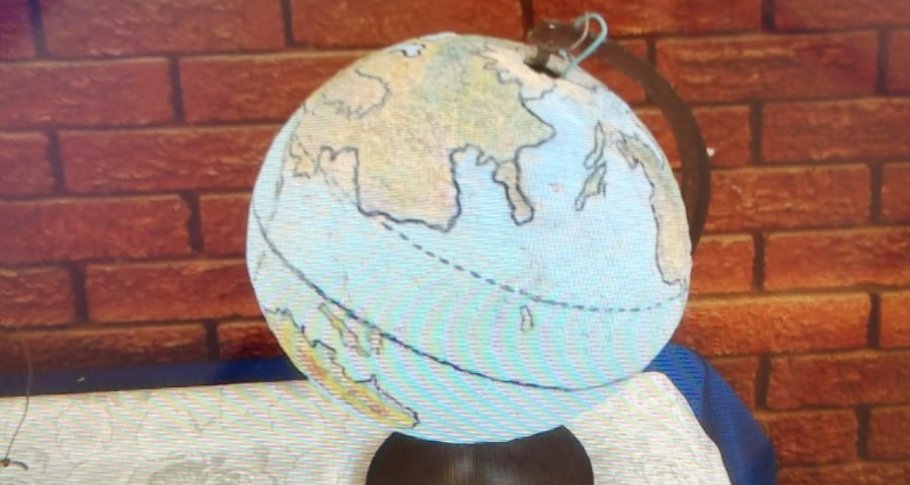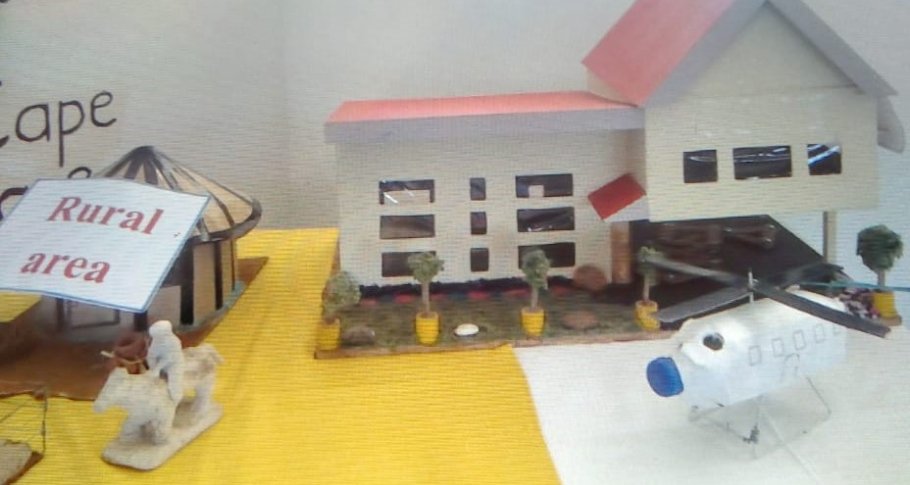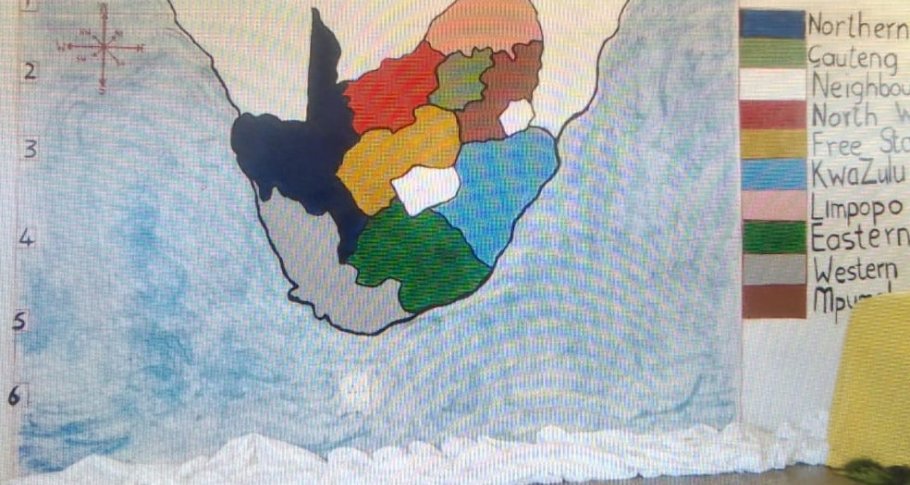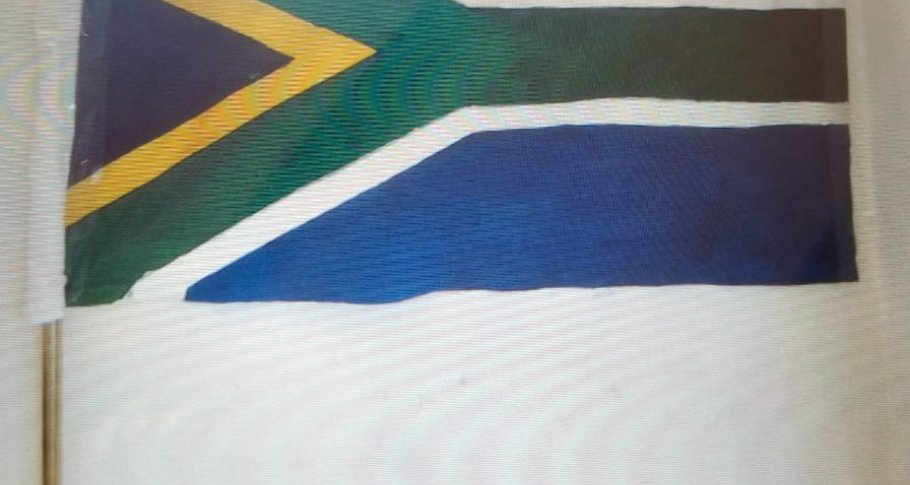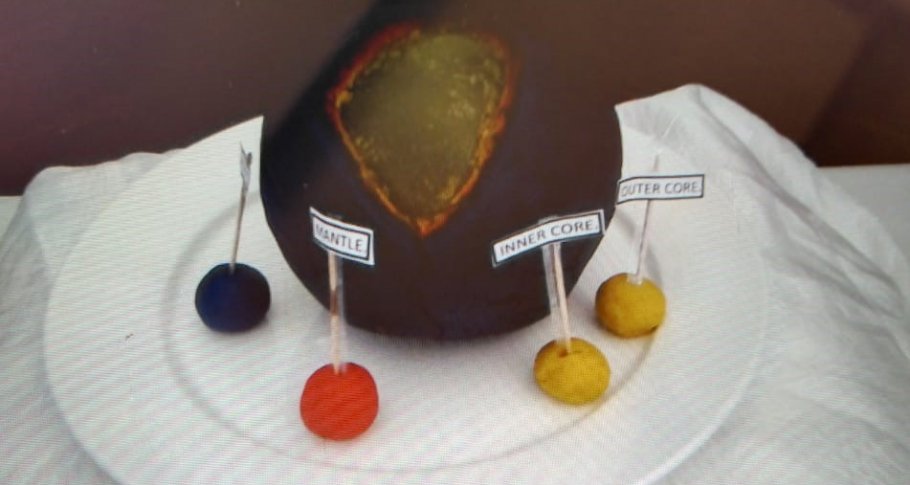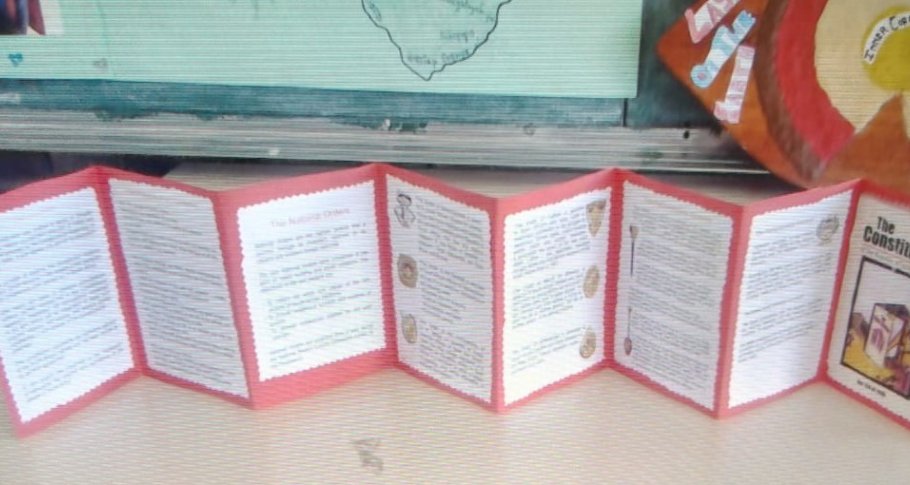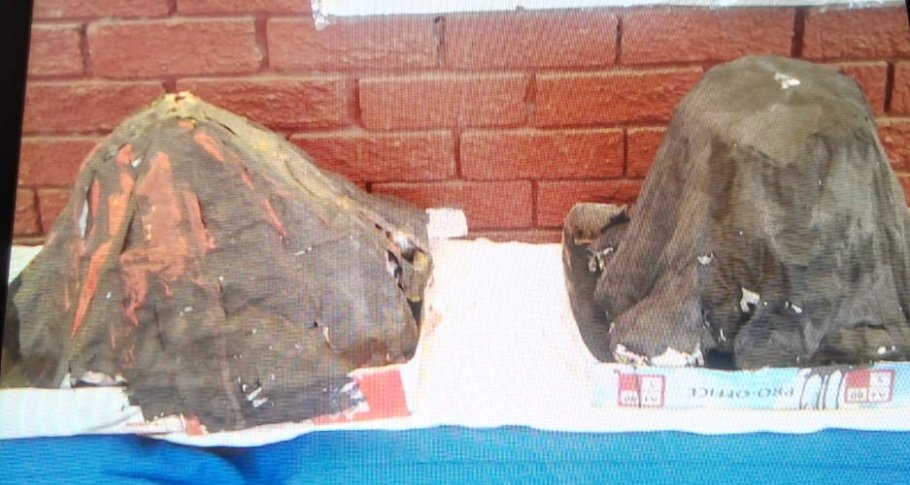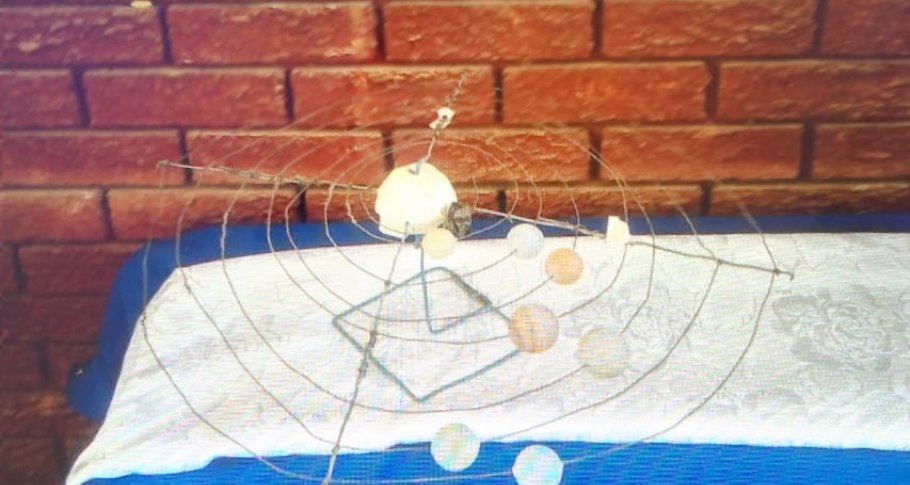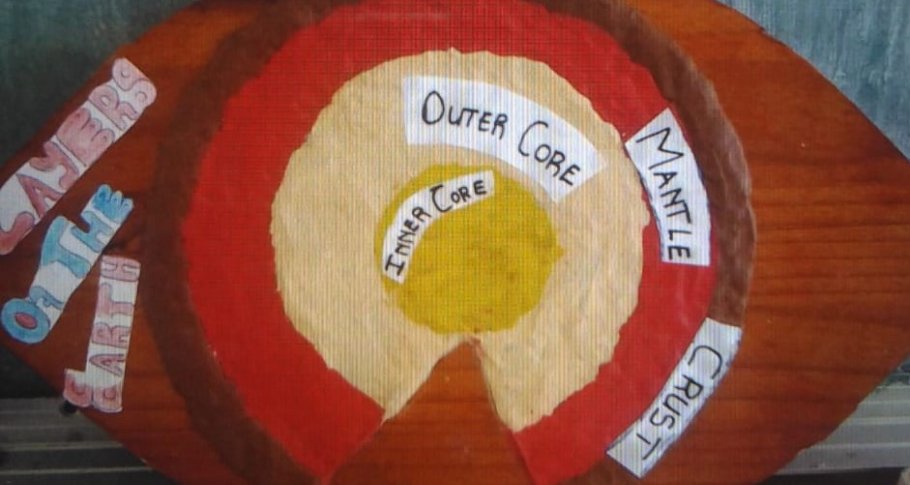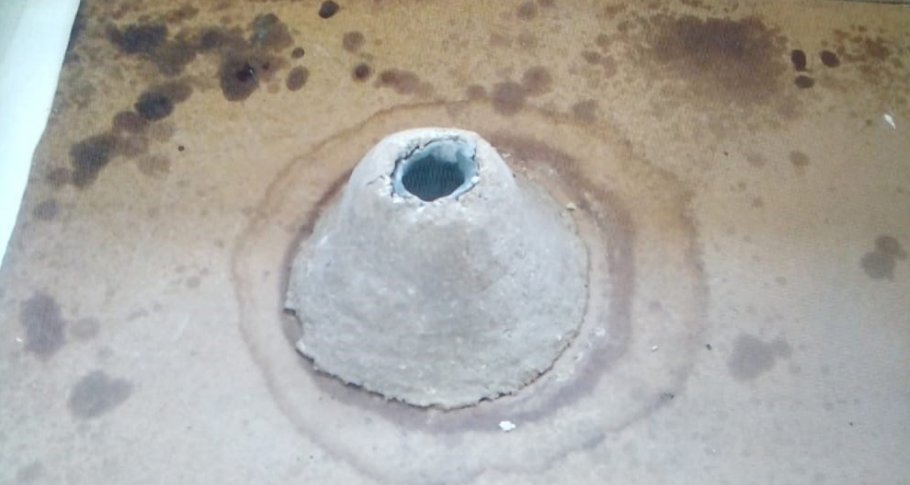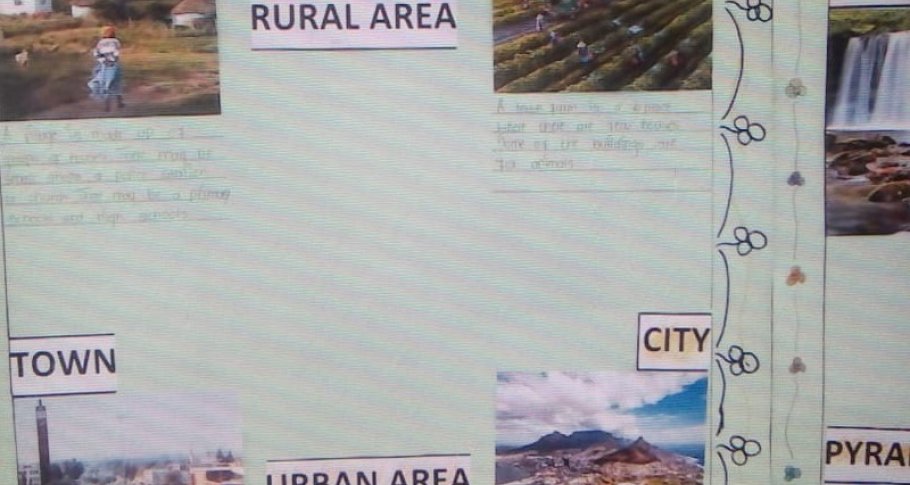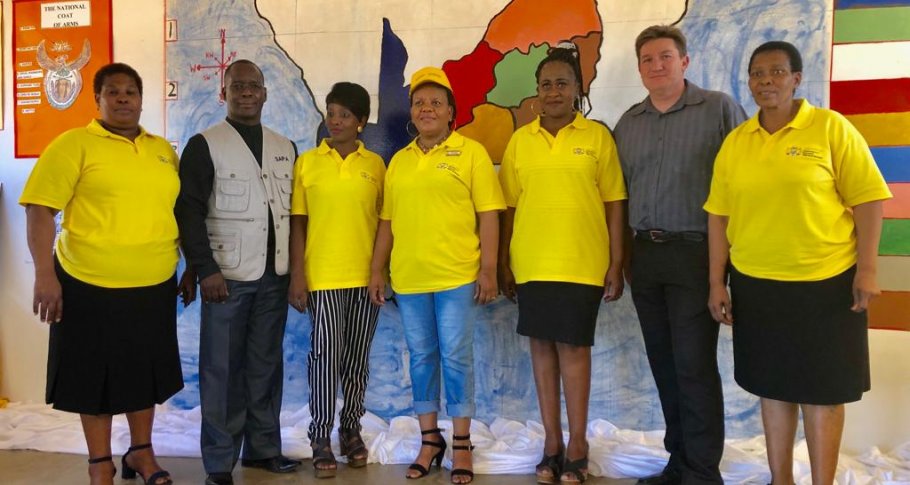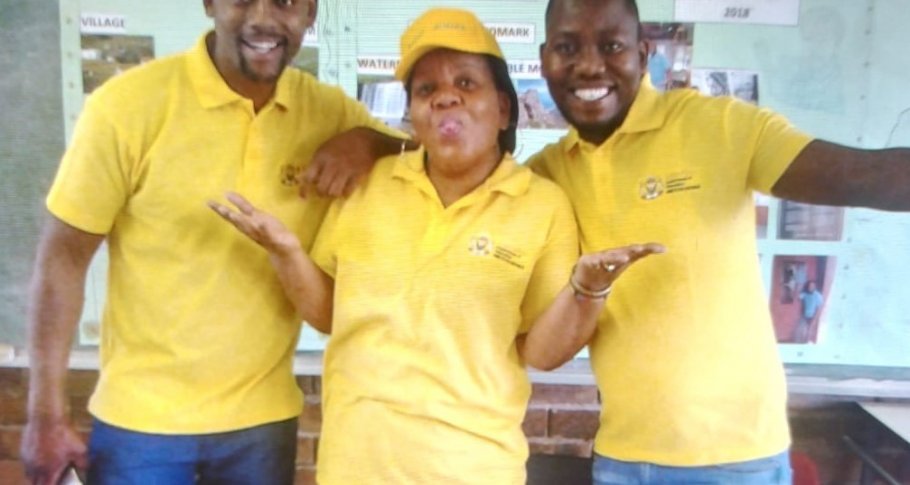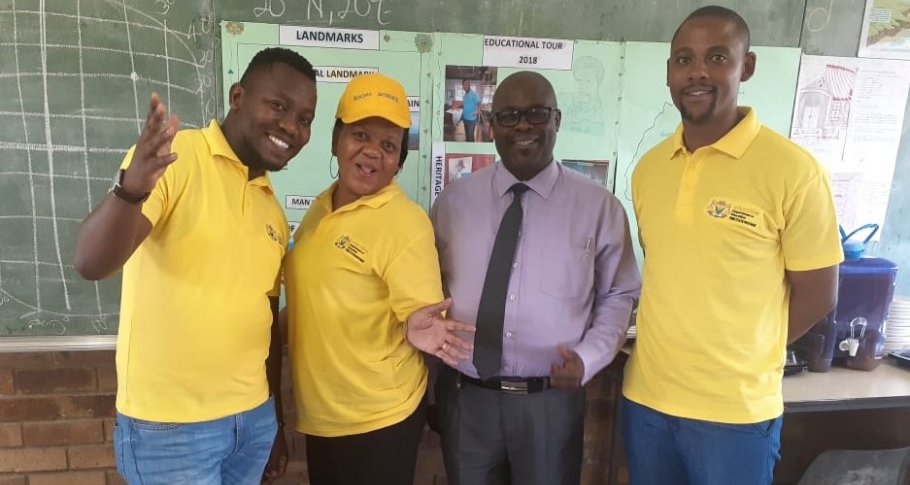The action research journey of Shirley Moopeloa, Subject Advisor Social Sciences
What started as a training in innovative teaching methods, ended with a Social Science Week, where teachers were learning from their pupils. Shirley Moopeloa explains how her action research mindshift launched a chain reaction of participatory solutions. ‘Instead of working top-down, we are now engaging teachers and evolving together.’
Shirley Moopeloa is Subject Advisor for Social Sciences supporting 65 Primary Schools (Grade 4 to Grade 6) from 5 circuits in the Lejweleputswa district in the Free State. She participated in the second VVOB action research cohort in her province. Her AR question was ‘How can I assist teachers and departmental heads on improving learner performance in Grade 4 in Social Sciences?’
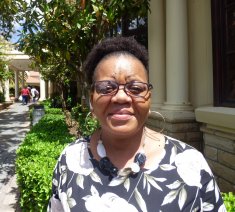
Shirley received part of the answer to her action research (AR) question from teachers themselves: ‘Can you please train us on innovative teaching strategies?', they asked her. The teachers were stuck with the traditional methods. Without engaging learners or without even asking them questions, they would pass on knowledge unilaterally. ‘When I went back to observe after my training, I found that they were already implementing the new methodologies they had just learned.’
Social Science Week
‘Ma’am, these new methods have actively involved our learners’, a teacher told Shirley. ‘I think we can even launch a Social Sciences Week.’ Shirley shares pictures of learners showcasing their own activities, making their own models, printing examples. ‘They pasted everything on the walls and displayed their models on the tables for everyone to come and view.’
‘A boy in Grade 4 chose "settlements" as a topic. He referred to models and gave examples of different types of settlements: cities, towns, villages and farms. It was so interesting’, Shirley smiles. Afterwards, the teachers told her: ‘When using these teaching and learning aids in the classroom, our pupils learn far better.’
‘A Grade 7 learner used coordinates to locate different places’, Shirley goes on. She showed latitudes and longitudes, naming the lines and the degrees. She asked her audience, her teachers, ‘Can one of you tell me what the coordinates of Turkey are?’ Not one of them was able to respond. ‘Okay, let me not embarrass you, my teachers’, the girl giggled, and ended up answering herself. Shirley gleams with pride when telling the story. Afterwards, a teacher confessed to her ‘I was struggling all this time to present this lesson, and this girl showed me how.’
‘They feel part of the solution’
Shirley experienced the most important shift in her own attitude. ‘I was used to my top-down approach. Action research has made me develop the habit to engage with my teachers. We are all evolving.’ Shirley and her teachers come up with solutions together. ‘They are not afraid to approach me anymore. They feel part of the solution, which makes implementation very easy.’
Dealing with transitions
Social Science performance was especially problematic in Grade 4, Shirley and her team noticed. The differences with Grade 5, 6 and 7 were significant. The problem appeared to originate in the transition from Grade 3. ‘In the lower grades, learners are used to one teacher, four subjects and the same classroom’, Shirley explains. ‘Whereas in Grade 4, they meet with different teachers, and the subjects multiply.’
Welcome to the future
Shirley sat together with the teachers to design an orientation programme for Grade 3 learners. ‘The collaboration was an important aspect, I didn’t just want to hand over a solution’, she emphasizes. In a video, children learn what is happening in their future classes. ‘The implementation was successful’, Shirley concludes. ‘We now use this video method for every transitional phase.’





